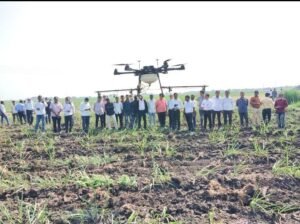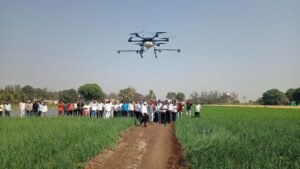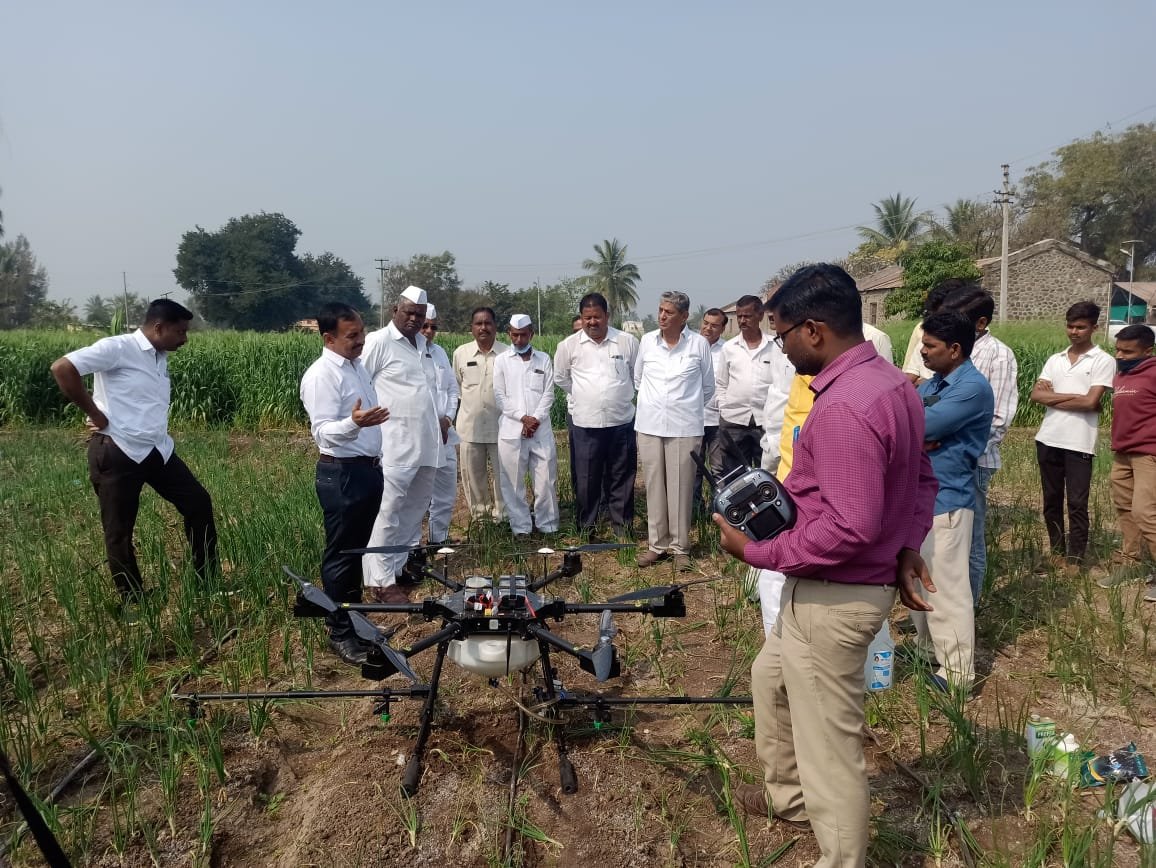Drones In Farming: Drones are one of the most recent technological advances to hit the farming industry. Farmers have been using drones for a while now to get a bird’s eye view of their crops and make sure they grow optimally. The techniques are used mainly in agriculture, but there could be potential for drone use in other industries. Check out this article to find out how you can use drones in your own workplace or home!
How Drones Wor
Drones are becoming an increasingly popular tool for farmers and agricultural workers. But how do drones work?
Drones are unmanned aircraft controlled remotely by a pilot on the ground. They can be used for various tasks, including mapping and surveying land, spraying crops with pesticides, and even delivering packages.
Farmers find that drones can be a valuable asset in their day-to-day operations. They can be used to quickly and efficiently survey large tracts of land, identify potential problems such as pests or crop damage, and track the progress of crops as they grow.
Drones can also be used to apply pesticides and other chemicals to crops. This can be done more accurately than traditional methods, and it reduces the number of chemicals that are needed overall.
Farmers are just beginning to scratch the surface of what drones can do. As technology continues to develop, we’ll likely see even more innovative uses for drones in agriculture.

The use of drones in agriculture is becoming increasingly popular as farmers look for ways to improve efficiency and productivity. Drones can be used for various tasks, including crop mapping, planting, and crop monitoring. They can also measure field conditions, such as moisture levels and soil composition.
Farmers are finding that drones offer a cost-effective way to improve their operations. In addition to the benefits mentioned above, drones can also help farmers save time and money on labor costs. With the help of drones, farmers can cover more ground in less time, getting their crops to market faster.
If you’re a farmer who is considering using drones in your operation, you should keep a few things in mind. First, you’ll need to ensure you have the proper permissions from the Federal Aviation Administration (FAA). Second, you’ll need to choose a suitable drone for your needs. There are a variety of agricultural drones on the market, so it’s essential to do your research before making a purchase.
Third, you’ll need to develop a solid plan for how you’ll use your drone. Will you be using it for crop mapping? Planting? Crop monitoring?
Techniques for Using Drones in farming
There are a variety of ways that drones can be used in agriculture. They can be used for mapping, crop scouting, and even spraying pesticides. Here are some tips for using drones in farming:
- Use drones for mapping. Drones can be used to create high-resolution maps of fields. This information can be used to plan field activities and track the progress of crops.
- Use drones for crop scouting. Drones can be equipped with cameras that can be used to identify problems with crops, such as pests or diseases. This information can help farmers make decisions about how to address these issues.
- Use drones for spraying pesticides. Drones can be equipped with tanks and nozzles to spray pesticides on crops. This can help farmers target specific areas and reduce the amount of pesticide used overall.
Who is Using Drones for Farming?

Drones are becoming increasingly popular in the agricultural industry for various tasks such as crop mapping, spraying, and even herding livestock. But who is using drones on the farm?
One of the most significant users of drones in agriculture is the Japanese company Yamamoto Farming. Yamamoto has been using drones to map fields and collect data on crops for several years. The company now has a fleet of over 100 drones and plans to use them for more tasks such as spraying and herding livestock.
Other companies using drones on the farm include Canadian company PrecisionHawk and American companies Trimble and Farmers Edge. PrecisionHawk provides farmers with drone-based mapping and analytics services, while Trimble offers GPS-guided drone systems for crop mapping and field scouting. Farmers Edge uses sensors and artificial intelligence to provide farmers with information about their crops.
Drones are also being used by universities and research organizations to study agriculture. For example, researchers at the University of Nebraska use drones to analyze corn growth. The University of Florida is using drones to map citrus trees. And Kansas State University is using drones to study how cattle graze.
With the increased use of drones in agriculture, there are sure to be more innovations in the
Conclusion
The use of drones in agriculture is on the rise, and there are many good reasons for it. Drones can help farmers save time and money while increasing the accuracy of their crop yields. If you’re a farmer looking to get started with using drones, be sure to check out our selection of agricultural drones. And if you have any questions about how to best use drones in your farming operation, feel free to contact us — we’re always happy to help.

